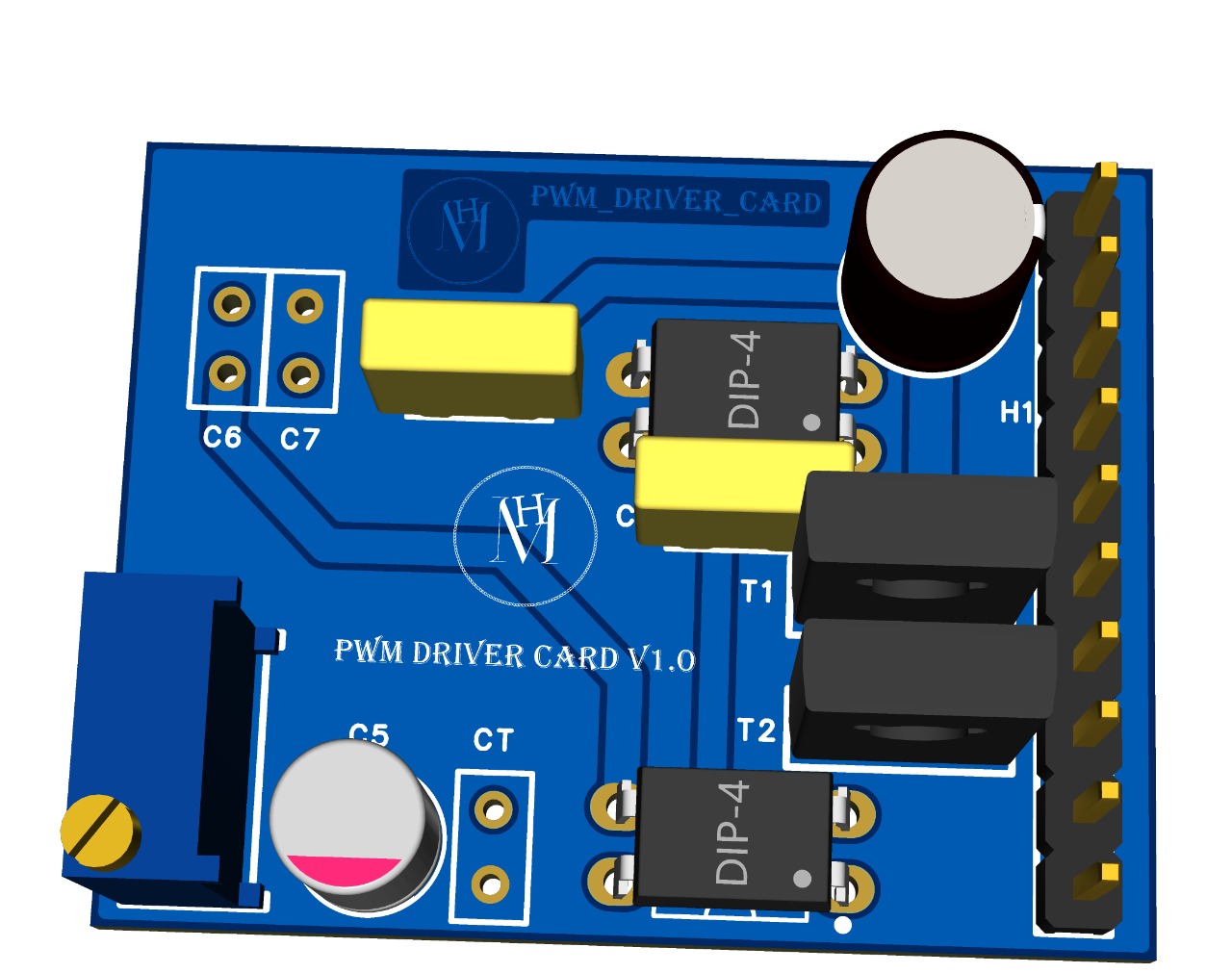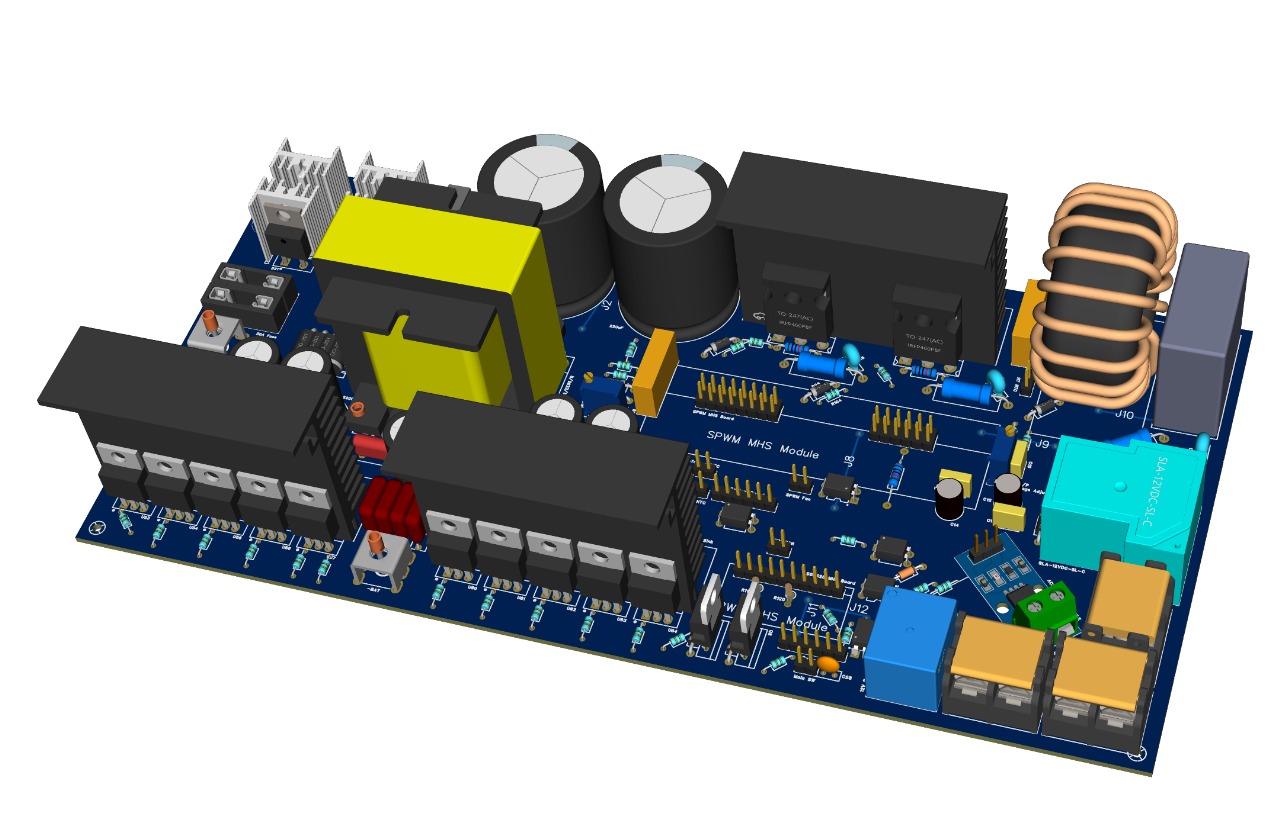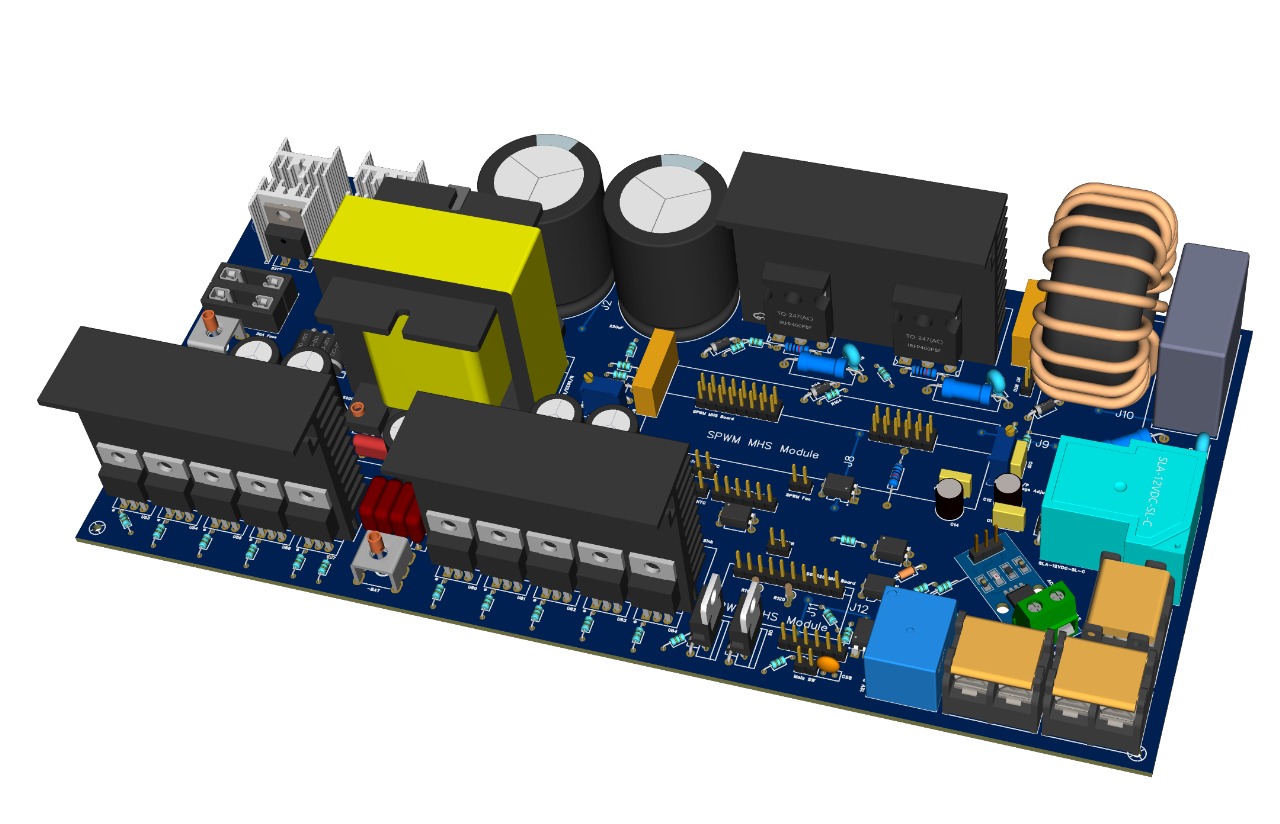Design and Implementation of Online UPS
Advanced Online Uninterruptible Power Supply system with modular architecture, zero transfer time, and intelligent power management for critical applications.
Project Overview
A comprehensive Online UPS system designed for critical power protection with advanced modular architecture.
System Architecture
Modular design with specialized driver cards for optimal performance and maintainability
PWM HF Driver Card
High-frequency PWM generation for DC-DC converter stages
- SG3525A PWM Controller
- Oscillator Circuitry
- Feedback Control
- Output Drivers (BD135G)
- Error Detection
- LED Indicators
Key Features & Design Principles
Advanced capabilities ensuring reliable power protection and system performance
Modular Architecture
Separation of driver cards from main board simplifies design, testing, and potential upgrades while improving maintainability.
High-Frequency Switching
Advanced PWM and SPWM generation with high-frequency components ensures compact and efficient power conversion.
Closed-Loop Control
Extensive feedback mechanisms for voltage, current, and temperature provide robust closed-loop control system.
Advanced Protection
Snubber circuits, overcurrent detection, and thermal management ensure reliability and system longevity.
IoT Connectivity
ESP32 integration enables advanced monitoring, control, and user interaction capabilities with remote access.
Electrical Isolation
Optocouplers (PC817C, TLP250) ensure electrical isolation between control and power stages for safety.
Performance & Operation
Outstanding performance metrics demonstrating system reliability and efficiency
SPWM Quality
Advanced EG8010-based SPWM generation produces high-quality sinusoidal output suitable for sensitive equipment.
Project Gallery
Visual documentation of the UPS system design and implementation



Future Enhancements
Planned improvements and advanced features for next-generation UPS systems
Energy Management
Peak shaving algorithms, renewable energy integration, and MPPT circuits for solar compatibility.
Scalability Features
Parallel operation capability, modular expansion options, and higher power rating adaptations.
Explore This Project
Discover the technical details, documentation, or discuss power electronics projects
